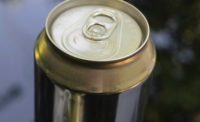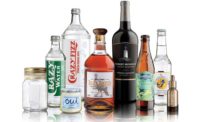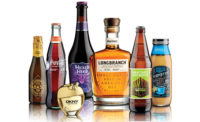Packaging Outlook 2020: Glass Packaging

The Numbers
The glass container industry’s efforts to support customer growth in 2019 was highlighted by an increase in shipments of containers for the non-alcoholic beverage, wine and spirits end markets. Shipment and production data collected and aggregated by Precision Consulting show the U.S. glass container industry shipped about 26.5 billion containers to customers in 2019.
Spirits, Wine & Beverages: Glass container shipments for wine, spirits and non-alcoholic beverages experienced increases in 2019. The food category remained stable and now accounts for 21% of the industry’s volume (up 1%), followed by non-alcoholic beverages (10%), wine (9%) and spirits, which now make up 6% of the overall glass food and beverage market.
Beer: Data for 2019 showed that while beer remained the largest customer market segment, it now represents 50% of the glass container industry volume (a drop of 5% in overall market share since 2016). While domestic beer bottle shipments saw declines similar to 2018, imports of filled beer bottles were up 1% in 2019.
Imports & Exports: Led by a double-digit decrease of imports of empty food and beverage glass containers from China, the largest importer of glass bottles into the U.S., overall imports were down about 2%. Tariffs imposed on Chinese glass bottle imports beginning in the 3rd quarter of last year likely contributing to this decline. Exports of empty glass containers decreased in a fashion similar to 2018, as customers and brands continued to source more bottles domestically.
Glass Manufacturing Facilities: With 42 glass container manufacturing plants across 22 states, food, beverage and cosmetics brands continue to have a wide variety of options for their bottles and jars. A new glass container manufacturing plant is scheduled to come later this year in Georgia, helping to meet the brands’ demand for glass bottles.
Glass Packaging Market Trends
2019 showcased the non-alcoholic market as a key driver to the growth of glass containers in a variety of specialty beverage markets. As Nielsen reported early last year, the shift to non-alcoholic beverages, with teas, juices and flavored carbonated drinks, leading the food and beverage innovation categories, with glass as an often-preferred packaging option. Clear and amber bottles continue to showcase a brand’s premium product for these markets.
Glass packaging continued its presence at a key wine industry event, The Unified Wine & Grape Symposium. GPI member companies Ardagh Glass, Gallo Glass and O-I highlighted the advantage of wine bottles produced in North America, showcasing individual company efforts focused on their bottles’ high levels of recycled content, lightweighting initiatives and convenient, nearby ordering options. All of these efforts support the brands’ efforts to reach company sustainability goals.
Glass Recycling
Since joining GPI this past August, President Scott DeFife has led a member-company driven engagement with supply chain companies, policy makers and municipalities to improve the quality of recycled glass, ensuring consumers have viable options for glass recycling and identifying regional recycling opportunities. Ongoing global recycling market pressures, emphasizing material quality over quantity, have challenged the glass container and recycling industry to re-examine and broaden the scope of recycling options.
In 2019, GPI, along with its member companies, enhanced its efforts in support of strategically placed glass drop-off bins for Northern Virginia municipalities. As a result, over the past year, hundreds of tons of recycled glass previously landfilled have been recycled into new glass bottles. This model of local government and private industry leadership is an option GPI will look to in 2020, if traditional recycling collection models fail to meet consumer expectations and industry needs.
GPI’s engagements have also resulted in emerging partnerships and collaborations with the Consumer Brands Association and The Recycling Partnership, as the glass container industry positions its packaging as an excellent option for brands, offering numerous environmental and aesthetic benefits.
In addition to industry collaboration, GPI was a lead stakeholder in the development and introduction of federal recycling legislation, the RECOVER Act (H.R. 5115), which would provide matching grant incentives for equipment and technology, to better sort recycled glass and other recyclables. GPI also offered its support for the RECYCLE Act (S. 2941), which would provide financial assistance and educational grants to municipalities so they may better inform residents of recycling options and contaminants.
Looking Ahead
In 2020, GPI will expand its work to promote glass bottles and jars, capitalizing on the broad-based push from brands, consumers and local governments to reduce plastics pollution, increase package recyclability and avoid landfill disposal. The industry will also seek new ways to support and promote GPI member companies at its conferences, meetings and online.
Scott DeFife, president of the Glass Packaging Institute, provided the information for this section. For information, visit gpi.org.
|
EXECUTIVE SUMMARY
|
Packaging Outlook 2020 Articles:
|
Looking for a reprint of this article?
From high-res PDFs to custom plaques, order your copy today!






